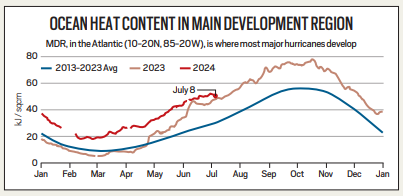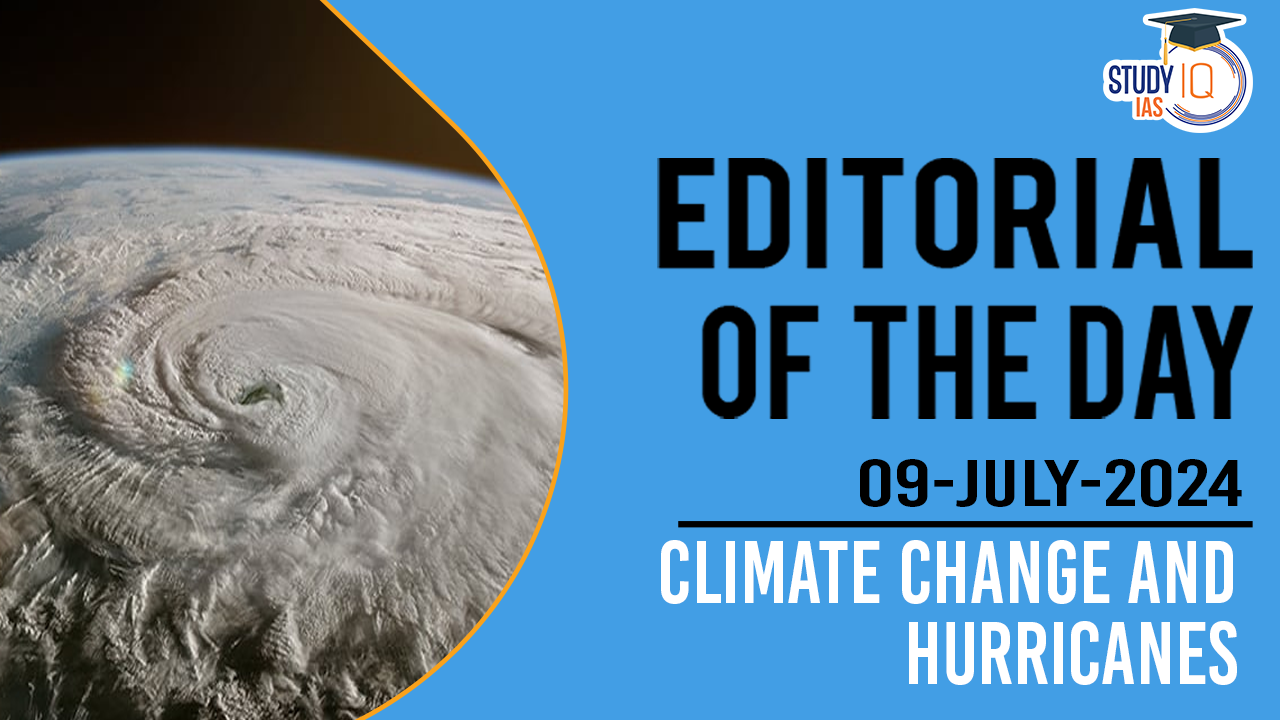Table of Contents
Context: Hurricane Beryl made history as the earliest Category 5 hurricane ever recorded in the Atlantic Ocean.
| Other Major Hurricanes in the Atlantic Ocean |
|
Hurricane Formation
- Hurricanes form over warm ocean waters near the equator.
- Warm, moist air rises creating low pressure.
- Surrounding air rushes in, rises, cools, and condenses into clouds and thunderstorms.
- This system gains energy from the warm water, forming a hurricane if sustained wind speeds reach 119 kmph or higher.
- The Saffir-Simpson Hurricane Wind Scale categorises hurricanes based on wind speed (Category 1: 119-153 kmph, Category 5: 252+ kmph).
Beryl’s Rapid Intensification
- Beryl formed as a tropical depression on June 28th and became a hurricane within 24 hours.
- It rapidly intensified into a Category 4 hurricane, the first ever recorded in June.
- By July 1st, Beryl reached Category 4 with winds exceeding 241 kmph, making landfall on Grenada.
- On July 2nd, Beryl became the strongest July Atlantic hurricane ever recorded, reaching Category 5 with winds of 265.5 kmph.

Climate Change and Beryl’s Early Strength
- The Atlantic hurricane season typically sees major hurricanes emerge in September due to cooler ocean temperatures earlier in the season.
- Unusually warm ocean temperatures, both at the surface and deeper down, are considered a primary factor in Beryl’s early development and strength.
- Rising ocean heat content (OHC) provides more energy for storms to develop and intensify.
- While directly attributing a single hurricane to climate change is difficult, scientists believe warmer oceans contribute to rapid intensification events.
The Future of Hurricanes
- The connection between climate change and hurricanes is a subject of ongoing scientific debate.
- However, there is evidence that climate change may increase the frequency and intensity of rapid intensification events.
- Warmer oceans could lead to the formation of even more powerful hurricanes in the future.


 Utkal Divas 2025: Odisha Foundation Day ...
Utkal Divas 2025: Odisha Foundation Day ...
 List of Military Exercises of India 2024...
List of Military Exercises of India 2024...
 GPS Spoofing and Its Impact in India: A ...
GPS Spoofing and Its Impact in India: A ...





















